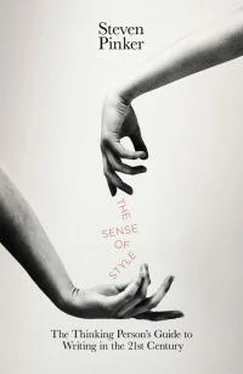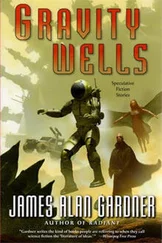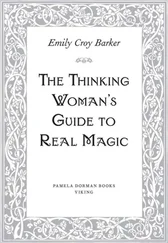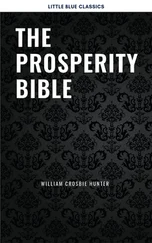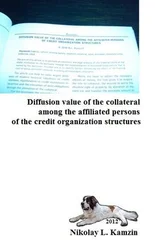Though the pedants are mistaken in insisting that than and as may only be conjunctions, the tree-thinking that motivates their judgment is sound. First, if you do opt for a formal style, don’t go overboard and write things like It affected them more than I . The chopped-off material after than is it affected me , not it affected I, so even the snootiest of the snoots would call for me in this sentence. Second, the two elements being compared should be grammatically and semantically parallel, a requirement that’s easy to flub when the first is complex. The condition of the first house we visited was better than the second can pass unnoticed in speech but can be grating on the page, because it compares apples (the condition) with oranges (the house). A careful reader will be happier with was better than that of the second; the cost of the additional empty words is outweighed by the pleasure of parallel syntax and semantics (a condition in each case). Finally, the casual version ( than me, as her, and so on) can be ambiguous: Biff likes the professor more than me can mean that he likes the professor more than he likes me or that he likes the professor more than I do. In these cases, using a nominative subject is technically clear but a bit stuffy— Biff likes the professor more than I —and the best solution is to saw off less of the sentence, leaving Biff likes the professor more than I do .
The debate on the correct syntactic category of than also feeds the tempest over whether you can say different than the rest, where than , once again, is a preposition with a noun phrase object, or you must say different from the rest, using the uncontroversial preposition from . Though different than NP is disliked by a slim majority of the AHD Usage Panel, it has long been common in carefully written prose. H. L. Mencken reported that a futile attempt to ban it in the 1920s elicited the following comment from the editors of the New York Sun: “The excellent tribe of grammarians, the precisians who strive to be correct and correctors, have as much power to prohibit a single word or phrase as a gray squirrel has to put out Orion with a flicker of its tail.” 32
that and which . Many spurious rules start out as helpful hints intended to rescue indecisive writers from paralysis when faced with a choice provided by the richness of English. These guides for the perplexed also make the lives of copy editors easier, so they may get incorporated into style sheets. Before you know it, a rule of thumb morphs into a rule of grammar, and a perfectly innocuous (albeit second-choice) construction is demonized as incorrect. Nowhere is this transition better documented than with the phony but ubiquitous rule on when to use which and when to use that . 33
According to the traditional rule, the choice depends on which of two kinds of relative clause the word is introducing. A nonrestrictive relative clause is set off by commas, dashes, or parentheses, and expresses a comment from the peanut gallery, as in The pair of shoes, which cost five thousand dollars, was hideous. A restrictive relative clause is essential to the meaning of the sentence, often because it pinpoints the referent of the noun from among a set of alternatives. If we were narrating a documentary about Imelda Marcos’s vast shoe collection and wanted to single out one of the pairs by how much she paid for it and then say something about that pair alone, we would write The pair of shoes that cost five thousand dollars was hideous. The choice between that and which, according to the rule, is simple: nonrestrictive relative clauses take which; restrictive relative clauses take that .
One part of the rule is correct: it’s odd to use that with a nonrestrictive relative clause, as in The pair of shoes, that cost a thousand dollars, was hideous . So odd, in fact, that few people write that way, rule or no rule.
The other part of the rule is utterly incorrect. There is nothing wrong with using which to introduce a restrictive relative clause, as in The pair of shoes which cost five thousand dollars was hideous. Indeed, with some restrictive relatives, which is the only option, such as That which doesn’t kill you makes you stronger and The book in which I scribbled my notes is worthless. Even when which isn’t mandatory, great writers have been using it for centuries, as in Shakespeare’s “Render therefore unto Caesar the things which are Caesar’s” and Franklin Roosevelt’s “a day which will live in infamy.” The linguist Geoffrey Pullum searched through a sample of classic novels by authors such as Dickens, Conrad, Melville, and Brontë and found that on average readers will bump into a restrictive relative clause with which by the time they are 3 percent of the way into it. 34Turning to edited prose in twenty-first-century English, he found that which was used in about a fifth of the restrictive relative clauses in American newspapers and in more than half of those in British newspapers. Even the grammar nannies can’t help themselves. In The Elements of Style E. B. White recommended “ which- hunting,” but in his classic essay “Death of a Pig” he wrote, “The premature expiration of a pig is, I soon discovered, a departure which the community marks solemnly on its calendar.”
The spurious rule against restrictive which sprang from a daydream by Henry Fowler in Modern English Usage in 1926 : “If writers would agree to regard that as the defining relative pronoun, & which as the non-defining, there would be much gain both in lucidity & in ease. Some there are who follow this principle now; but it would be idle to pretend that it is the practice either of most or of the best writers.” The lexicographer Bergen Evans punctured the reverie with an observation that should be embossed on little cards and handed out to language pedants: “What is not the practice of most, or of the best, is not part of our common language.” 35
So what’s a writer to do? The real decision is not whether to use that or which but whether to use a restrictive or a nonrestrictive relative clause. If a phrase which expresses a comment about a noun can be omitted without substantially changing the meaning, and if it would be pronounced after a slight pause and with its own intonation contour, then be sure to set it off with commas (or dashes or parentheses): The Cambridge restaurant, which had failed to clean its grease trap, was infested with roaches. Having done so, you don’t have to worry about whether to use that or which, because if you’re tempted to use that it means either that you are more than two hundred years old or that your ear for the English language is so mistuned that the choice of that and which is the least of your worries.
If, on the other hand, a phrase provides information about a noun that is crucial to the point of the sentence (as in Every Cambridge restaurant which failed to clean its grease trap was infested with roaches, where omitting the underlined phrase would radically alter the meaning), and if it is pronounced within the same intonation contour as the noun, then don’t set it off with punctuation. As for the choice you now face between which and that: if you hate making decisions, you generally won’t go wrong if you use that. You’ll be a good boy or girl in the eyes of copy editors, and will have avoided a sibilant, which many readers find ugly. Some guidelines recommend a switch to which when the relative clause is separated from the noun it modifies, as in An application to renew a license which had previously been rejected must be resubmitted within thirty days, where the underlined clause modifies the faraway noun application, not the next-door noun license. Otherwise you could tilt toward that depending on the degree of restrictiveness, that is, the degree to which the meaning of the sentence critically depends on the relative clause. When the modified noun is quantified with every, only, all, some, or few, the relative changes everything: Every iPad that has been dropped in the bathtub stops working is very different from Every iPad stops working , and with those noun phrases that tends to sound a bit better. Or you could trust your ear, or flip a coin. Level of style won’t help you here: unlike the alternatives set apart by other pseudo-rules in the oral tradition, neither which nor that is more formal than the other.
Читать дальше
